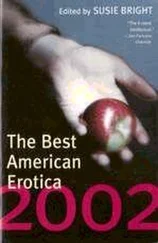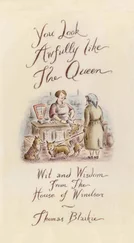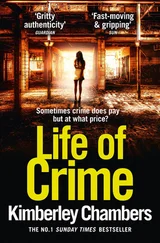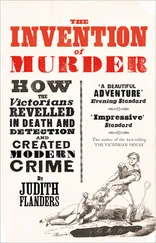If the family’s status was on display in the choice of the house, then it followed that location and public rooms were more important than comfort and convenience, and certainly more important than the private, family, spaces.
Surrounding London, the choice of suburbs was endless. Because of the railway going into the City, Camberwell and Peckham (that ‘Arcadian vale’, as W. S. Gilbert called it in Trial by Jury in 1875) were home to clerks – Camberwell was home to one in every eight clerks in London by the end of the century;’ 60 Hammersmith, Balham and Leyton, too, were all lower middle class. Penge and Ealing, with no direct railway, were middle class; Hampstead was upper middle. These were not arbitrary designations made after the event. Contemporary guidebooks allocated St John’s Wood to authors, journalists and publishers; Tyburnia (Marble Arch) and Bayswater, Haverstock Hill, Brixton and Clapham, Kennington and Stockwell to ‘City men’ – stockbrokers, merchants and commercial agents. Denmark Hill, where Ruskin had grown up, was ‘the Belgravia of South London’. Sydenham, Highgate, Barnes and Richmond were, simply, for the rich. * 61
Arthur Munby, an upper-middle-class civil servant, in his journal in 1860 noted the class distinctions of each district as naturally as we note street signs:
Walked to S. Paul’s Churchyard, and took an omnibus to Brentford … In Fleet St. and the Strand, small tradesmen strolling with wives and children, servant maids with their sweethearts, clerks in gorgeous pairs: westward, ‘genteel’ people, gentry, ‘swells’ & ladies, till the tide of fashionable strollers breaks on Hyde Park Corner: then, beyond Knights-bridge and all the way to Brentford, middle-class men & women staring idly over the blinds of their suburban windows, and slinking back when you look that way: lower class ditto ditto standing & staring at their doors, equally idle, but much more frank and at their ease; staring openly & boldly, having purchased rest and tobacco by a good week’s work. 62
Trollope was one of the finest arbiters of what made one suburb work and another a failure, although he admired, against the trend, the lawyer who was ‘one of those old-fashioned people who think a spacious substantial house in Bloomsbury Square, at a rent of a hundred and twenty pounds a year, is better worth having than a narrow, lath-and-plaster, ill-built tenement at nearly double the price out westward of the parks’. 63
All of these suburbs, however remote, had one focus: the city they surrounded. However segregated, secluded and private, every morning the suburbs emptied as the workers headed off to the city, here watched by the journalist G. A. Sala:
Nine o’clock … If the morning be fine, the pavement of the Strand and Fleet Street looks quite radiant with the spruce clerks walking down to their offices governmental, financial, and commercial …
… the omnibuses meet at the Bank and disgorge the clerks by hundreds; repeating this operation scores of times between nine and ten o’clock. But you are not to delude yourself, that either by wheeled vehicle or by the humbler conveyances known as ‘Shank’s mare’, and the ‘Marrowbone stage’ – in more refined language, walking – have all those who have business in the city reached their destination. No; the Silent Highway has been their travelling route. On the … bosom of Father Thames, they have been borne in swift, grimy little steamboats, crowded with living freights from Chelsea, and Pimlico, and Vauxhall piers, from Hungerford, Waterloo, Temple, Blackfriars, and Southwark – to the Old Shades Pier, hard by London Bridge. Then for an instant, Thames Street Upper and Lower, is invaded by an ant-hill swarm of spruce clerks, who mingle strangely with the fish-women and the dock-porters. But the insatiable counting-houses * soon swallow them up … 64
The segregation and classification that came so naturally to Munby and Sala permeated every aspect of Victorian life. Suburbs were ranked to keep the classes separate; neighbourhoods without shops or services kept functions – home versus work – apart. Once inside the house, the need to classify and divide did not end: houses were designed to keep the function of any one group of inhabitants from impinging on any other. Home was a private space, guarded watchfully from contamination by the life of the world; but within the home, too, each separate space had its own privacy, and each enclosed a smaller privacy within it, like a series of ever smaller Russian dolls: every room, every piece of furniture, every object, in theory, had its own function, which it alone could perform: nothing else would serve, and to make do with a multipurpose substitute was not quite respectable. Privacy and segregation of function, especially as the latter defined social status, were the keynotes to the terraced house. Robert Kerr, an architect, wrote in his book on The Gentleman ’s House that privacy was ‘our primary classification’ for the ideal house – he put it ahead of a dozen other desirable characteristics such as ‘comfort’, ‘convenience’ and ‘cheerfulness’. 65
Nothing was to be allowed to escape from its own particular container. Kerr’s most obvious concern was that servants and their masters should remain separate: ‘the Family Rooms shall be essentially private, and as much as possible the Family Thoroughfares. It becomes the foremost of all maxims, therefore, however small the establishment, that the Servants’ Department shall be separated from the Main House, so that what passes on either side of the boundary shall be both invisible and inaudible on the other.’ Some of the examples of these boundaries being breached were servants overhearing their masters; or coal or scullery noises penetrating outside the coal-hole or scullery; or, worse, smells wafting through the house; ‘or when a Kitchen doorway in the Vestibule or Staircase exposes to the view of every one the dresser or the cooking range’. * 66 When a glimpse of inappropriate furniture through a doorway is disturbing, it seems important to examine how household life was structured, what its concerns and obligations were in daily life.
The standard plan of the terraced house was quickly arrived at. The town houses of the gentry were taller, wider and deeper, but that was the sole distinction: the layouts of the houses of both rich and poor were eerily similar. The middle classes wanted the houses that the upper classes lived in; the poorer classes were content to live in cut-down versions of the middle-class house. The great landowners encouraged this type of housing on their estates, as something familiar to them: the earlier town houses that were their own London homes had conformed to this model. Thus, as cities were rapidly generated on their land, they forced the builders into repeating the older patterns. In turn, when speculative builders bought parcels of land to make investments of their own, they copied the more prestigious estates built by the upper classes.
Architects at the time (and ever since) called the houses inconvenient and impractical, but if the demand had not been there, neither would the houses have been: these estates were built to meet a need, and if the population had shown a desire for something else, something else would have appeared.
Party walls were rigidly controlled: they were the line of demarcation between houses, and ground landlords allowed no breach of them to occur. They were also the main means of fire prevention, and for this reason it was usual to require them to continue upwards at least 15 inches higher than the roof. But those who wrote about building practices noted that all the walls were too flimsy (half a brick, or 41/2 inches, thick rather than the one brick, at 9 inches, that was necessary to keep water out), that foundations were not built, and that damp-courses were not laid. 67 It was not coincidental that the word ‘jerry-built’ was first recorded in the nineteenth century. Some bricks were so rotten that, when fires were lit, smoke came out through the sides of the chimneys. In her diary Beatrix Potter noted other practices that were even more unsavoury:
Читать дальше












